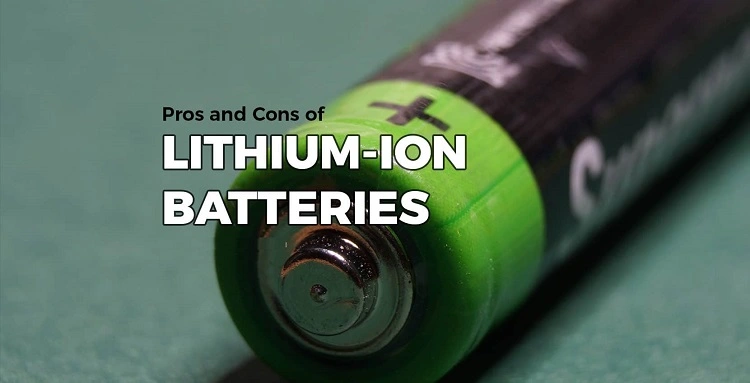There are many different types of batteries, each with its pros and cons. This article will explore Lithium-ion battery technology in-depth to help you understand the differences. Experts from an iphone repair shop in NYC reviewed this topic for knowledgeland.com.
Lithium-ion batteries have been around since 1970 when Japanese researchers were studying metal alloys for use in electric vehicles. They noticed that lithium is lighter than other metals they had studied, so they started experimenting with it as a potential battery material. When the self-discharge rate of the lithium-ion battery was discovered to be lower than lead-acid and nickel-cadmium cells – two common types of rechargeable cells at the time – it quickly became popular among scientists and engineers alike. Today we know that this type of cell is capable of higher energy densities and can deliver more continuous amps.
Lithium-ion batteries are generally cylindrical and have a prismatic cell structure, meaning they consist of multiple cells stacked together. These cells contain one electrode made of lithium metal oxides while the other is carbon mixed with a conductive agent such as graphite or its oxide. The anode doesn’t conduct electricity, but when it is placed in the cell with the cathode (the part that conducts), electrons will move from the anode to the cathode during discharge and back again when charging.
Below we go into both the pros and cons of lithium-ion batteries and point out some of the limitations scientists and engineers are trying to overcome:
Advantages of lithium-ion batteries
Lithium-ion batteries have some distinct advantages over other rechargeable cell types:
- More self-discharge rate than any other type of battery. This means that if the cells aren’t connected to a circuit and stored away from charged cells, they will lose their power over time. Lithium-ion discharges a few percent a day, while other cell types let out a few percent a year.
- The cell voltage also produces less heat when compared to other rechargeable cell types that use the same materials. This is primarily due to their different chemistry and their shape which allows more electrolyte inside, even though it’s packed in a smaller space.
- Lithium-ion batteries are lightweight compared to other types of cells. They are used in everything from cell phones and laptops to electric cars.
- The self-discharge rate is also more predictable than many other types of rechargeable batteries due to the chemistry involved in their construction. This can help give you a better idea of when the battery is considered dead.
These are just some of the advantages of lithium-ion batteries. Now let’s take a look at some of the disadvantages:
Disadvantages of lithium-ion batteries
While self-discharge is an advantage for this type of battery it also has its cons:
- Lithium-ion cells can be dangerous if misused or short-circuited. They will overheat and potentially catch fire and explode if mishandled.
- If the cell is punctured or has its outer casing destroyed, you have a risk of being exposed to the electrolyte which also contains flammable compounds.
- The self-discharge rate can be annoying when devices are left idle for long periods of time. There are ways to counter this by putting these cells in low self-discharge mode, but that’s only on some products.
- The self-discharge rate also contributes to the self-heating of the cell when left idle for long periods of time – not something you want happening to your laptops or phones while they are unplugged.
Surprisingly there are just as many disadvantages to lithium-ion batteries as advantages. Many researchers are working on improving both the self-discharge rate and making cells more durable. This approach is called “vegetable oil” chemistry because it uses non-flammable components compared to its combustible predecessor.
Are lithium batteries better?
Lithium-ion batteries are the most common rechargeable cell type for consumer electronics. Lithium cobalt oxide is used in some products, but it’s less safe than lithium iron phosphate since it contains more of the potentially flammable compound. The self-discharge is the biggest drawback to this cell type and a primary reason why many electric vehicles are using the more expensive, but safer lithium iron phosphate cell. It’s difficult to say whether self-discharge is an advantage or a disadvantage since it depends on how you look at it – do you want self-heating or self-charging?
The self-discharge rate of a lithium-ion battery does make these cells great for applications where they are charged and discharged frequently. However, this could be a disadvantage if the cell is not going to be used for an extended period. It’s important to remember that lithium batteries can self-heat or self-charge if not connected to a circuit as well as self-discharge when idle. If you want your car to have a self-charge capability, look for cells that have built-in electronics to prevent self-discharging. This can be a disadvantage when it comes to electric vehicles and large batteries used to store energy from solar panels or wind turbines but is an advantage when it comes to smaller-sized batteries such as those found in electric cars. It’s a double-edged sword for self-discharge.
So, there you have it – it is both an advantage and disadvantage depending on how you look at it. It will take another decade or so before self-discharging batteries become mainstream, but as lithium iron phosphate becomes less expensive to produce we may see them replacing lithium-ion cells in large-sized batteries.
Conclusion
Lithium-ion batteries have a major role in our everyday lives. They are powering everything from phones and laptops, to electric cars that can drive for hundreds of kilometers before their next charge. Despite the self-discharging rate, scientists and engineers alike continue to find ways to make these cells better while considering safety precautions.
